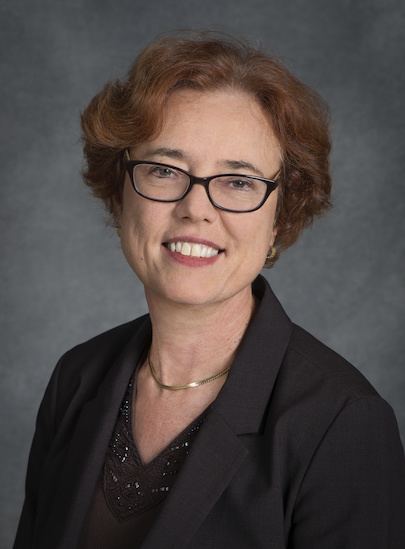Nationality United States Name Barbara Jacak | Role Physicist | |
 | ||
Institutions Los Alamos National LaboratoryStony Brook University Alma mater Michigan State UniversityNational Superconducting Cyclotron Laboratory Doctoral students Anne Sickles, Matt Nguyen, Mike McCumber, John Chen, Megan Connors Notable awards J.R. Oppenheimer FellowFellow of the American Physics SocietyNational Academy of Sciences | ||
Residence United States of America | ||
November 2 2015 barbara jacak
Barbara Jacak ([ˈjat͡sak]) is a nuclear physicist who uses heavy ion collisions for fundamental studies of hot, dense nuclear matter. She is Director of the Nuclear Science Division, Lawrence Berkeley National Laboratory, and a professor of Physics at UC Berkeley. Before going to Berkeley, she was a member of the Department of Physics and Astronomy at Stony Brook University, where she held the rank of Distinguished Professor. She is a leading member of the collaboration that built and operates the PHENIX detector, one of the large detectors currently operating at the Relativistic Heavy Ion Collider at Brookhaven National Laboratory, and was involved in the discovery of the quark gluon plasma and its strongly coupled, liquid-like behavior. Throughout her career she has served on many advisory committees and boards including the National Research Council Committee on Nuclear Physics, and the Physical Review C Editorial Board.
Contents
- November 2 2015 barbara jacak
- audio barbara jacak interview april 15 2008
- Physics career
- PHENIX Collaboration
- ALICE Collaboration
- Honors
- Selected publications
- References
audio barbara jacak interview april 15 2008
Physics career
Jacak started her career at Michigan State University, where she completed her Ph.D. in Chemical Physics in 1984 working at the National Superconducting Cyclotron Laboratory (NSCL). She began working at Los Alamos National Laboratory in 1984 as a J.R. Oppenheimer Fellow. She became a laboratory staff member in 1987, continuing until 1996. During her time at Los Alamos, she also taught as an Adjunct Associate Professor at the University of New Mexico, from 1994–1996. In 1997 she joined Stony Brook University to lead the Relativistic Heavy Ion Group, affiliated with the PHENIX experiment. In 2008, she was appointed to the rank of Distinguished Professor.
Since January, 2015, Jacak has been the Director of the Nuclear Science Division at Lawrence Berkeley Laboratories. She also holds joint appointments as Faculty Senior Scientist at Berkeley Lab and as Professor of Physics at UC Berkeley.
PHENIX Collaboration
Jacak has been a member of the PHENIX Collaboration since the detector was first proposed. She served on the Detector Council from 1992-1994 and the Executive Council from 1994-2006. In December 2006 she was elected as spokesperson of PHENIX. She served as spokesperson for two consecutive terms, stepping down at the end of 2012. Under her leadership as spokesperson, PHENIX published over 60 papers in peer-reviewed journals and graduated over 90 Ph.D.'s from institutions around the world. She oversaw the successful instillation of three major detector upgrades, as well as several smaller upgrades.
ALICE Collaboration
Prof. Jacak has been a member of the ALICE Collaboration since March 2015. She is the team leader of the UC Berkeley group. .
